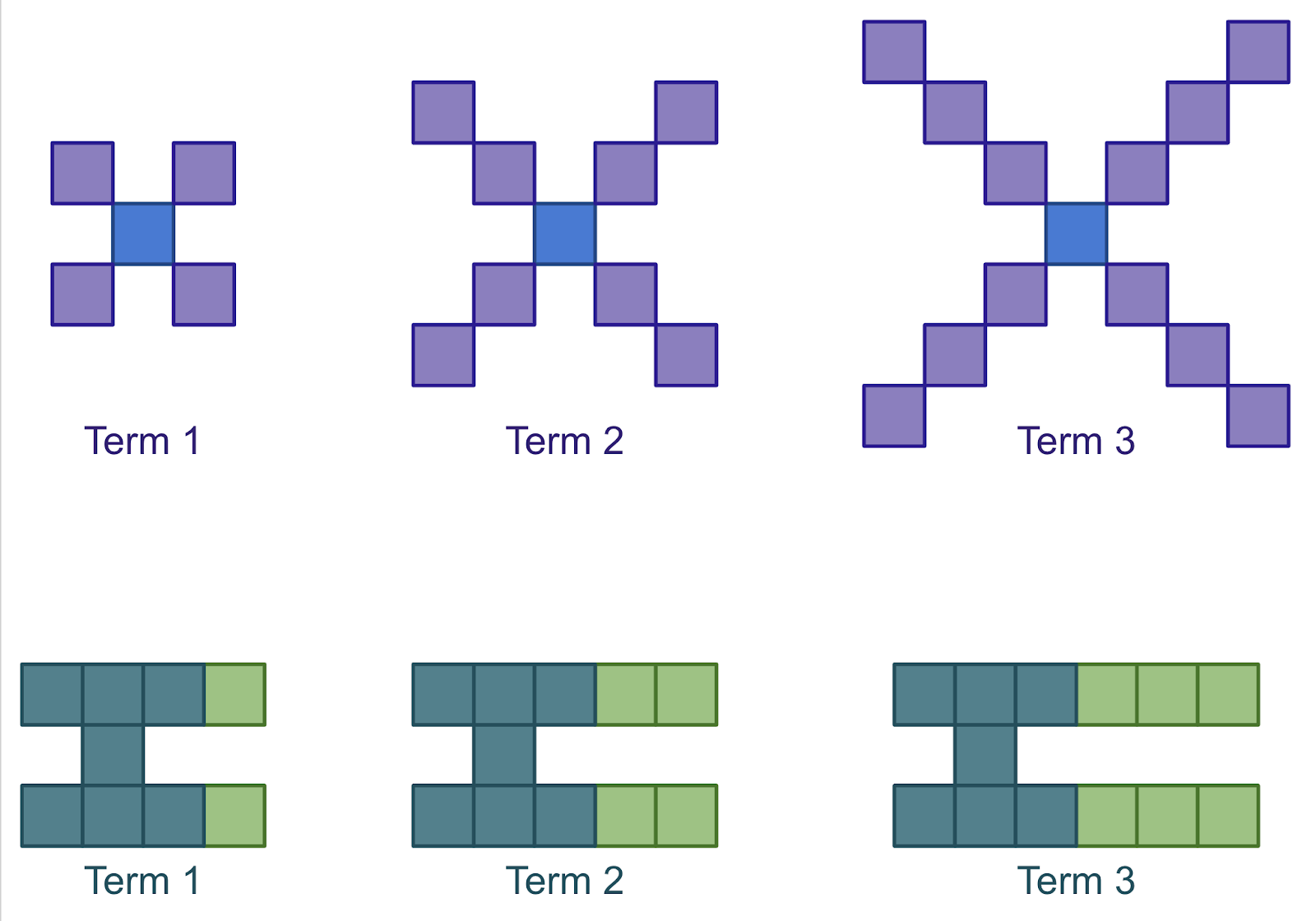Problem Solving Prompts
Learning Goals:
- Describe and extend a variety of numeric and geometric patterns
- Make predictions related to patterns
- Communicate mathematical thinking orally and visually
The Challenge:
Examine the two growing patterns below. What do you notice? What do you wonder?

How are these two patterns similar? How are they different?
What changes and what stays the same as each pattern progresses?
At what term will each pattern reach a value of 29 squares? How do you know?
Describe what this term will look like in each case.
Questions and Prompts to Support your Child:
- Which pattern did you start working with first? Why?
- How do the visual representations of each pattern help you think about how they are growing? What do you think is going on with the different colours?
- How could we extend the patterns without having to draw out every new term?
Extensions & Adaptations:
- The Mathies Colour Tiles Tool might be useful in building some terms or extending the patterns.
- For each pattern, see if you can find a pattern rule that would let you find any term you wanted.
- Try organizing the terms of each pattern into a table of values, or you could even try graphing the ordered pairs using Desmos Online Graphing Calculator. Don’t forget the comma and brackets – i.e., Term three’s ordered pair would be (3, 13) because it is built of 13 squares.
Source: Adapted from Visualpatterns.org
Categories: Elementary

